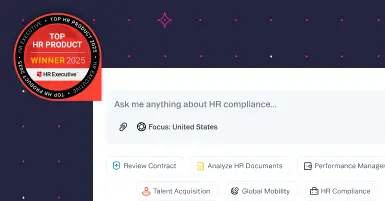One of the most challenging aspects of expanding operations to the United States is finding and hiring the right employees while navigating a complex web of federal, state, and local laws. Hiring employees in the USA involves understanding key employment regulations to ensure successful onboarding of workers. The hiring process requires knowledge of employment laws, employee benefits, and hiring employees compliance.
Recruiting and non-discrimination laws in the U.S.
Recruitment in the USA requires adherence to both federal and state laws to avoid legal complications. This includes knowing how the Department of Labor governs recruitment and hiring practices. The foundation of fair hiring in the U.S. is the principle of equal employment opportunity. The Equal Employment Opportunity Commission (EEOC) is the primary federal agency enforcing laws making it illegal to discriminate against an employee, job applicant, or independent contractor. Federal law prohibits discrimination based on:
-
Race
-
Color
-
Religion
-
Sex (including pregnancy, childbirth, sexual orientation, and gender identity)
-
National origin
-
Age (40 or older)
-
Disability
-
Genetic information
Many states and cities provide additional protections, prohibiting discrimination based on factors like marital status or political affiliation. To avoid claims of discrimination, employers should ensure job descriptions are neutral and avoid interview questions about protected characteristics. Additionally, companies must ensure their hiring practices remain compliant with the Immigration and Nationality Act (INA).
When expanding to new regions, G-P Gia offers instant, expert guidance on compliance assessing risk and outlining employment laws—saving valuable time to focus on hiring the right talent. Gia also provides real-time, multi-jurisdiction compliance checks on employment contracts — no more waiting days for legal counsel or accumulating costly billable hours.
USA recruitment
To attract a global workforce, companies should implement recruitment plans that emphasize cultural diversity and comply with international labor laws. Digital platforms such as LinkedIn can expand the talent pool by accessing a global workforce. Comprehending the intricacies of global labor laws, taxes, and regulations is crucial for developing inclusive recruitment strategies, thereby positioning companies as appealing employers for international talent.
Background checks and pre-employment screening
Employers who conduct background checks must comply with the federal Fair Credit Reporting Act (FCRA) and manage the security of personal information. This law regulates how employers can obtain and use consumer reports, which include criminal history and credit reports. Employers must get a candidate’s written permission before conducting a background check.
It is crucial to be aware of state and local laws that may impose stricter rules. For example, numerous jurisdictions have enacted “ban-the-box” laws that limit when an employer can inquire about a candidate’s criminal history. Similarly, many states and cities have passed laws prohibiting employers from asking candidates about their salary history.
How to hire employees: At-will employment and offer letters
The U.S. operates primarily under the principle of “at-will” employment. This means that, in the absence of a specific contract stating otherwise, either the employer or the employee can terminate the employment relationship at any time, for any lawful reason, without notice. Montana is the only state that is not fully at-will, making it essential to understand state-specific employment laws.
While formal, fixed-term employment contracts are uncommon, providing a written offer letter is a standard best practice. A comprehensive offer letter helps prevent future misunderstandings and should be signed by the new hire. Key terms to include are:
-
Position title, duties, and reporting structure
-
Start date
-
Compensation and pay schedule
-
Statement of at-will employment
-
Contingencies, such as successful completion of a background check
-
An overview of benefits and eligibility
-
Confidentiality requirements and any restrictive covenants (subject to state law)
Understanding employee benefits in the USA
Understanding employee benefits is important for companies aiming to hire and retain skilled employees in the United States. Offering a robust benefits package, including health insurance, retirement plans, and paid leave, can significantly improve employee retention. Ensuring compliance with federal mandates such as Social Security contributions and tax regulations is imperative for structuring employee benefits correctly. By meeting these requirements, companies secure organizational stability and satisfaction among their workforce.
Key employment law considerations
While employment laws vary significantly by state, all companies must adhere to federal standards:
-
Wage and hour laws: The federal minimum wage is USD 7.25 per hour for non-exempt employees. However, the majority of states, and many cities, have higher minimum wage rates. Effective January 1, 2025, the federal salary threshold for most exempt (salaried) employees is USD 58,656 per year. Non-exempt employees are generally entitled to overtime pay for hours worked over 40 in a workweek. Employers must pay attention to both federal and state wage regulations.
-
Employment eligibility verification: Within three days of a new hire's start date, employers must complete and retain Form I-9, Employment Eligibility Verification. This form, mandated by U.S. Citizenship and Immigration Services (USCIS), verifies the identity and legal authorization of individuals to work in the United States.
Onboarding new hires in the U.S.
A structured onboarding process is essential for setting up new employees for success. Beyond introducing company culture and job responsibilities, a compliant onboarding process must include completing required new hire paperwork. On their first day, employees should complete essential documents, including:
-
Form I-9 (as mentioned above)
-
Form W-4 (Employee's Withholding Certificate) for federal tax purposes
-
Any required state tax withholding forms
-
Benefits enrollment forms and policy acknowledgments
Providing a clear schedule for the first week helps create an engaging and positive experience, integrating the new team member efficiently.
Simplifying hiring with employer of record (EOR) solutions
The Employer of Record (EOR) approach eases the hiring process for companies looking to expand globally or manage remote teams. An EOR manages critical employment tasks like payroll and compliance with local labor laws, ensuring companies meet tax and employment law requirements. The EOR model is especially advantageous for businesses hiring in new international markets without the expense of establishing a local entity.
Grow globally with G-P.
G-P EOR makes hiring global teams in a matter of minutes simple, risk free and compliant. All without the need to set up entities or spend time, money and resources engaging consultants and local experts in HR, law and taxes. With G-P you get simple work flows, integrations, and AI-powered features that transform the way you onboard, manage, and pay contractors in more than 130 currencies and over 190 countries. Saving you hours of manual work.
Contact us today to learn more about how we can help you recruit, hire, and onboard anyone, anywhere.




















